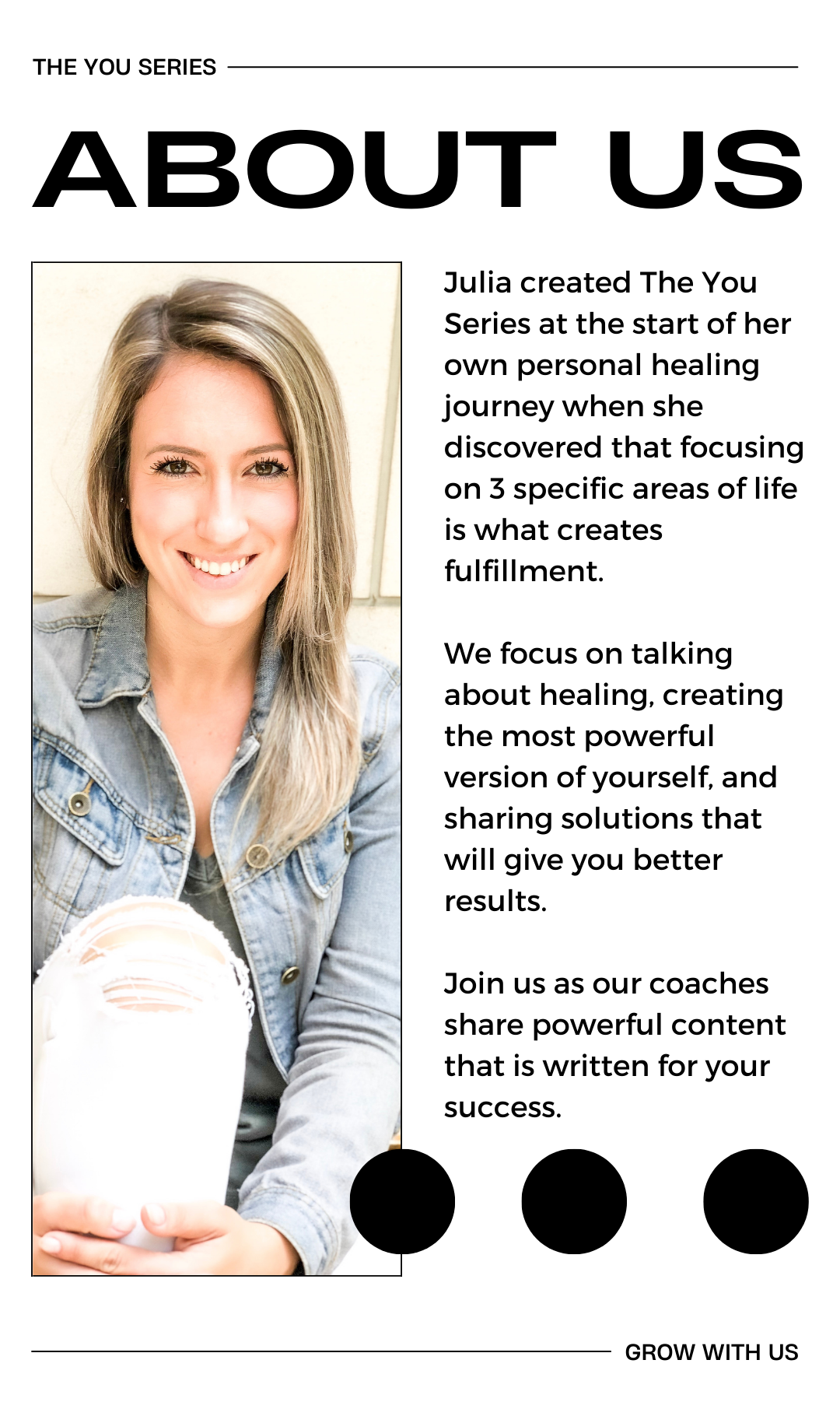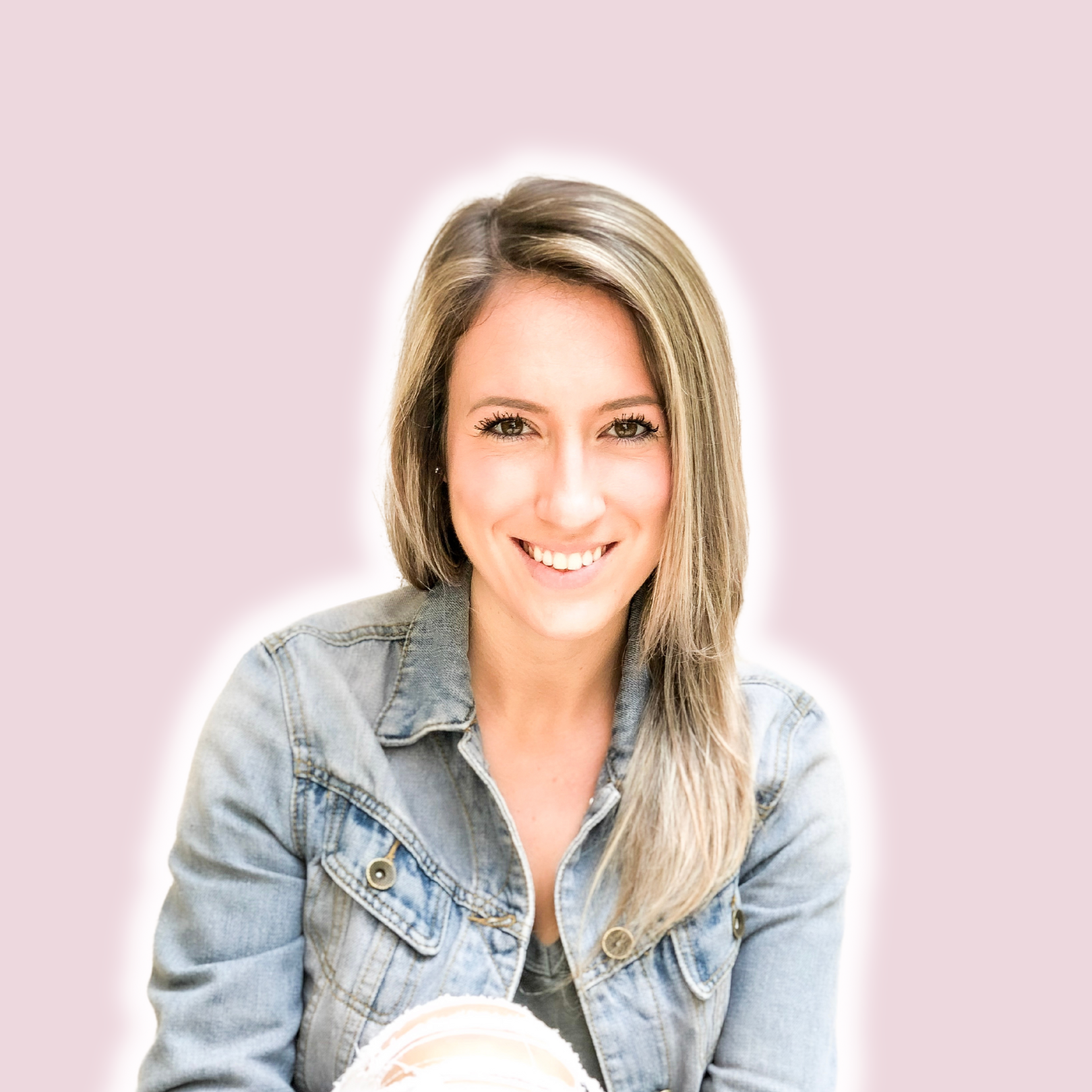Family is often where we seek love, connection, and a sense of belonging. But what happens when those ideals collide with a reality that feels far from it? My journey through complex family relationships, boundaries, and healing has revealed the true impact of avoidance and the courage it takes to pursue a genuine connection, even when it means redefining family itself.
In families, especially in those with what most would call “toxic” or “dysfunctional dynamics”, labels and judgments often mask deeper issues. Some individuals may choose healing, confronting painful patterns, while others avoid reflection, allowing wounds to remain unaddressed. This contrast between those who seek growth and those who resist it—can shape entire family systems.
In this blog, we’ll explore my journey of navigating these dynamics, the impact of choosing to heal, and what I’ve learned about building a more peaceful life despite inherited dysfunction. We’ll look at the signs of healing versus avoidance, how family patterns influence our choices, and ways to move toward a more fulfilling life in the face of resistance.
These ideas, understandings, and concepts have been born from my own experiences, lessons, and hardships.
Jump To Section:
Introduction: Dreaming of a Close, Authentic Family
Reflecting on Terms like “Toxic” and “Dysfunctional”
The Concept of Wounded Families
Characteristics of Wounded People Who Seek Healing
Characteristics of Wounded People Who Avoid Healing
Healing vs. Avoidance: The Impact on Family Relationships
The Power of Healing and Accountability
Letting Go of Labels and Embracing Compassionate Understanding
Intro: Dreaming of a Close, Authentic Family
Story Time:
Growing up, my home life was chaotic. My parents started young—my mom was 20 and my dad 29 when they had me. By 28, my mom had three children, and our family had moved from Romania to Canada. She’d always dreamed of going to medical school, but life had other plans, and she struggled with resentment, often directing her frustration at us kids. For years, I heard things like “I wish I never had you,” and always felt I wasn’t good enough.
A New Light of Hope:
My parents eventually separated, and my dad became a more consistent support. With him, I felt compassion and care that I didn’t get from my mom, who often seemed unpredictable and insecure. At 18, I began to see the world with fresh eyes, exploring new relationships and finding mentorship that helped me grow. My first seminar taught me about accountability—how some of my behaviors were holding me back—and sparked hope that life could become more peaceful. Around that same time, I let go of a relationship that showed signs of emotional abuse, and I vowed to never let myself go through that again. That was the first major step in my healing journey.
My Mission Became:
I began focusing on inner peace, refusing to recreate the chaotic experiences I had as a child. My family each began their healing journeys, each of us exploring ways to live more peacefully with everyone but my mom, who remains in her wounds. I poured myself into meditation, self-care, and discovering what it truly means to be a kind and loving human.
Discovering This New Family Dynamics:
Fast forward about nine years: I met my husband. At first, we were friends, but his kind heart and generosity deepened our connection, eventually leading to a loving partnership. My husband showed me a level of love and safety I’d never felt before. But as we grew closer, I became aware of a family dynamic that wasn’t easy to adjust to. My husband’s family had a history of tension, often revolving around his brother’s wife, who was the center of their gatherings. For years, I tried to fit in, even when attending these events made me feel like I was suffocating because the dynamic was out of alignment with my core values.
One Christmas, I finally set a boundary with her. I told her that the drama and expectations were too much for me and that while I’d be cordial, we couldn’t be friends. The reaction from his family was one of punishment and judgment as if I’d broken an unspoken rule to ‘keep it together.’ I learned that everyone was used to “shoving things under the rug” for the sake of harmony, but it was never authentic harmony.
Unspoken Rules:
Through these experiences, I saw the unspoken rules in his family: no one ever confronted issues directly, there was an ever-present tension, and relationships stayed distant outside of holiday gatherings. As someone who’d spent years working on growth and healing, this felt foreign. Still, I made repeated efforts to form connections with his family, but my gestures of kindness often went unreciprocated.
Our Wedding – The Tipping Point:
Our wedding became a tipping point. His brother refused to attend, his mother held me accountable for the family’s strained relationships, and we faced passive-aggressive behavior from relatives and guests who were supposed to be there for us. The experience was deeply painful and reinforced my awareness of a recurring dynamic: I was a scapegoat for an existing family rift. It was as if they needed someone to blame for the family’s unhealed wounds, and I became that person.
A Broken Dream:
I’ve always dreamed of a close, connected family a place of safety, understanding, and support. My journey through family dynamics, boundaries, and healing taught me how to pursue this dream, even when reality fell short. With a long journey ahead when it comes to my husband’s family. I can tell you that I’ve been able to reframe my dream of a happy, closely connected family in a way that serves us today.
Reflecting on these experiences, I’ve come to understand..
There are two types of wounded people:
- Those who are wounded but seek healing and growth,
- and those who are wounded but seek no growth.
My journey has shown me the difference, and this post explores these different paths in life and relationships.
Reflecting on Terms like “Toxic” and “Dysfunctional”
During the process of understanding and healing, it’s common to label families as “toxic” or “dysfunctional” when they don’t meet our expectations. I’ve been there myself, and I know what it feels like, to feel deeply hurt, like you’ve been mistreated and not sure how to make sense of the situation. Every bit of it can feel “Toxic”.
These terms provide an immediate sense of clarity, allowing us to categorize our experiences and frustrations. When family dynamics become painful or confusing, labeling them as “toxic” can feel like a necessary step in reclaiming our narrative. It gives us an outlet to express our pain, making it easier to communicate the hurt we’ve endured.
However, while these labels may seem empowering, they can also be limiting.
Why?
They often create a rigid framework that focuses your mind on negativity rather than the potential for it a better tomorrow and transformation.
When we label our families in this way, we risk overlooking the complexities of our relationships. Families are not just made up of harmful behaviors; they are shaped by their pasts, individual traumas, and unresolved pain. Oversimplifying this complexity can lead to resentment which will block your healing, shifting your focus to blame instead of understanding.
Instead, I’ve found that using terms like “unhealthy” or “wounded” offers a softer approach that guides you toward compassion and healing. this does not mean that it’s all okay. This is just about your experience, process, and healing.
These words acknowledge the pain and dysfunction present within family dynamics, defining them by their worst moments.
It’s about your healing:
By recognizing that families can be both loving and deeply flawed, we open the door to empathy and healing.
In my experience, I was able to see the wounds of people who hurt me, Accept their actions, and choose for myself to step away from the situation entirely.
You can see that someone is wounded, notice that they seek no healing, which brings about blaming and unhealthy mannerisms, and step back for your sanity from the relationship.
The Concept of Wounded Families
Every family carries its own set of wounds, often stemming from trauma, conflict, or unmet needs. These experiences shape how family members interact, influencing their behaviors and responses. In my journey of experiencing the different families, I’ve seen how these wounds manifest in ways that significantly affect our relationships.
 Wounded Families Stuck in Pain:
Wounded Families Stuck in Pain:
For instance, my husband’s mother often operates from a place of unresolved emotional pain. Her tendency to avoid confronting her feelings results in a controlling and emotionally stifling atmosphere. This avoidance creates a cycle where genuine connection is absent, and family members are expected to show up and play their role in the “we are fine” front during holidays. This response to issues and conflict has been passed down to her children. Instead of addressing their emotional needs, they suppress them, leading to resentment, defensiveness and many misunderstandings.
The family struggles to have difficult conversations, often dismissing issues to avoid confrontation, which can leave others feeling emotionally bullied.
While someone from the outside looking in might label their interactions as “toxic,” it’s clear that these behaviors are rooted in deeper wounds that require healing.
They often focus on blaming others rather than asking themselves, “What did I do to create this outcome?”
Common unhealthy responses like:
- “This is all her fault.”
- “I’m not hashing shit out,”
- “Get over it, act like an adult,”
- “Grow up”
There are ineffective ways to address someone’s boundaries or requests for conflict resolution.
Wounded Families Seeking Healing:
In contrast, my family has made significant strides toward healing over the years. Everyone but my Mom has sought out seminars, and perspective-changing ideologies when it comes to personal growth and breaking bad old behaviorism.
We don’t shove things under the rug; and pretend like things are okay when they’re not, we express what’s on our minds.
If someone needs space, we give them space, try to figure out their boundaries, and if we want to move forward. How can we respect those boundaries? There’s no pretending everything is fine during holiday dinners.
Family members who choose healing acknowledge their traumas and the impact those experiences have on our relationships.
Using language like:
- I take responsibility for….
- I acknowledge I hurt you here, here is how I’m working to better myself
- I’ve noticed I’m triggered when you say… and I react….
This ability to understand oneself. Having the self-awareness to see what may have gone wrong, the desire to heal, and experience healthier relationships. This leads to conversations of accountability and growth. This leads to conversations always starting with “I” and not with “You”.
Not all family members will choose to seek healing and growth:
While I’ve dedicated myself to self-care, learning, breaking old patterns, finding peace, healing, and personal growth through meditation, courses, and my therapy journey. All families still carry wounded individuals and not all of them choose healing. My mother has struggled to engage in similar practices. She remains wounded and is not actively seeking healing. This difference has significantly shaped our interactions. My commitment to healing has led to open, authentic conversations and a supportive environment. In contrast, her reluctance to confront her wounds often results in defensiveness, avoidance, and deep anger. Has me keeping my distance.
The paths we choose to address our wounds impact our relationships and family dynamics:
The paths we choose to address our wounds—whether seeking healing or avoiding responsibility—have a profound impact on family dynamics. Those who pursue healing understand self-awareness which leads to having empathy, and where open communication thrives.
Whereas avoidance creates a cycle of conflict, leaving family members feeling disconnected, missing out on the rich experiences of life, struggling with low self-confidence, and feeling frustrated.
Characteristics of Wounded People Who Seek Healing
In examining how families cope with their emotional wounds inside different family dynamics. We can see two common approaches: healing and avoidance. Every family and individual carries a unique set of wounds, often stemming from past traumas, unmet needs, or unresolved conflicts. How family members choose to address (or ignore) these wounds can greatly impact their well-being and the health of their relationships. People who pursue healing may not have all the answers, but they actively work to create positive changes in their lives. Here’s a look at some of the qualities and habits they embody:
1. A Sense of Accountability
Healing begins with accountability. Those who seek healing understand how their past experiences impact their current behaviors and relationships.
Example: “I know my defensiveness stems from past criticism. I’m working on responding calmly instead.”
2. Willingness to Reflect and Self-Correct
Healing is challenging and requires self-awareness. People in this mindset pause to reflect, identify their patterns, and make changes even when it’s uncomfortable.
Example: “Growing up, emotions were suppressed in my family. I’m learning to be more open and communicate better.”
3. Curiosity About the Roots of Their Behaviors
Curiosity about personal triggers is a critical part of healing. These individuals might seek therapy or resources to understand the origin of their reactions.
Example: Someone who struggles with trust issues starts therapy to understand why, rather than letting it impact their relationships.
4. Empathy and Forgiveness for Others
Recognizing that others may be wounded too, they approach difficult relationships with empathy and forgiveness.
Example: “I’m hurt by my friend’s actions, but I know they’re going through something. I’ll work on forgiving them.”
5. Boundaries with Love
They set boundaries for self-care and peace, not from anger or resentment.
Example: “I love my family, but I need to protect my peace. I’ll spend time with them on my own terms.”
6. Openness to Learning and Growth
Relationships are seen as opportunities for growth. They are willing to communicate, apologize, and improve.
Example: “I realize my reaction was intense. I’m learning to express my feelings more calmly.”
7. Seeking Support
Seeking help through therapy, reading, or mindfulness practices is common, as they understand that healing is a process.
Example: If facing anxiety, they might start therapy or practice mindfulness.
8. Patience and Hopefulness – They are hopeful about their progress, showing patience with themselves as they continue to grow.
Example: “I still feel anxious, but I’m improving day by day.”
Characteristics of Wounded People Who Avoid Healing
While some actively seek healing and growth, taking accountability and working to improve. Others especially those raised in avoidant family dynamics tend to avoid self-reflection. They build walls that leave pain unaddressed and patterns unchallenged. Avoiding self-reflection and resisting change, often carrying unresolved pain that manifests in harmful ways. Here’s a look at some common characteristics of this mindset:
1. Blaming Others
Members from avoidant family dynamics often externalize their issues. This means they see others as the source of their problems rather than looking within.
Example: “Everyone’s always against me,” instead of considering their role in conflicts.
2. Defensiveness and Avoidance
If someone suggests a need for change, they may react defensively or shut down, refusing to consider it.
Example: “This is just who I am, take it or leave it.”
3. Repeating Harmful Patterns
Even when behavior leads to conflict, they might continue with no desire to change.
Example: Frequently arguing with loved ones but refusing to find compromise or seek peace. on the other hand silencing differences acting like nothing is wrong, and still getting together for dinners. (Someone not used to this dynamic may feel uncomfortable with all the avoidance.)
4. Denial of Painful Experiences
They often minimize or deny their own or others’ pain, suppressing problems rather than addressing them.
Example: After a loss, they might say, “It’s no big deal, get over it” or “We are not hashing this out.” avoiding the need to process grief.
5. Fear of Vulnerability and Intimacy
They often keep relationships at arm’s length to avoid getting hurt, limiting emotional connections. There could also be a lack of emotional awareness. They simply cannot connect deeply because of the “Hush, hush” family dynamics they experienced growing up.
Example: “I don’t do feelings,” or “Grow up” which prevents meaningful interactions with friends and family.
6. Holding Grudges and Refusing Forgiveness
Resentment becomes a shield against vulnerability, sometimes lasting years.
Example: After an argument, they might cut off a family member, refusing to reconcile.
7. Belief that Change is Impossible
They may feel stuck, viewing life as unchangeable and any attempt at healing as pointless.
Example: “People don’t change; life is just this way.”
8. Avoidance of Help
Rejecting support from therapy or loved ones, they choose to suffer in silence rather than explore coping methods.
Example: “Therapy is a waste of time,” or “I’m not talking about this or sorting it out.” while continuing to engage in uncomfortable family dynamics and perhaps emotionally continue to struggle.
9. Negative Coping Mechanisms
They may use escapism or addiction to numb unresolved pain rather than face it.
Example: Drinking heavily to avoid difficult emotions and labeling it as “relaxation.”
Those who avoid healing build barriers around themselves, choosing short-term protection over long-term growth, often resulting in disconnection, low self-confidence, and inner conflict.
Healing vs. Avoidance: The Impact on Family Relationships
Every family has its own set of challenges, shaped by experiences that may be positive, painful, or a mix of both. How family members approach these wounds, whether through healing or avoidance. Makes a big difference in their relationships. It either creates a path toward closeness or one that keeps emotional walls in place.
We do not get to choose what family we are born into but we can distinguish the difference between what works and what doesn’t work. As an adult, you get to decide what environments you want to spend your energy in.
What Studies Show:
In families where members actively work toward healing, there’s often a sense of openness and accountability. People acknowledge that past hurts have impacted them and consciously try to make positive changes. Studies show that this kind of constructive conflict can lead to closer relationships. For example, research at Yale found that when parents and teens engage in disagreements with emotional warmth, it can strengthen their bond rather than hurt it. These open conversations allow family members to express themselves fully, building resilience and understanding even amid tough conversations
On the other hand, avoidance-based family dynamics can create invisible walls, where wounds remain unaddressed, leaving everyone with unspoken tension. Families who avoid addressing underlying issues may initially feel more “peaceful,” but over time, members often feel disconnected. Family Communication Patterns Theory (FCP) has shown that protective, avoidant communication styles may foster conformity but discourage honest dialogue, which often leaves family members feeling less understood and connected. The lack of self-expression and suppressed conflict can eventually lead to a sense of alienation, as unresolved issues prevent emotional depth and genuine connection
In short, families who choose healing over avoidance are more likely to experience closeness. Constructive conversations don’t just resolve conflict—they build a foundation for trust, respect, and growth. Families that see challenges as opportunities to understand one another often create deeper, lasting bonds.
The Trap of Avoidance
Avoidance in families can feel deceptively safe because it shields everyone from uncomfortable conversations, but this “sweep it under the rug” mentality has serious downsides. When families avoid addressing problems or ignore the need for open dialogue, it can lead to an undercurrent of resentment, low self-esteem, and even bitterness among members. Rather than truly moving on, people feel like they can’t talk openly, and small issues build up over time, eventually creating a sense of disconnection and misunderstanding. Studies back this up: families that avoid dealing with conflict tend to feel less close and often struggle with lingering misunderstandings that could have been cleared up if they’d just had that conversation.
Avoidant family dynamics also bring about rigid, self-protective mindsets that limit any chance of change. For example, someone might say, “This is just who I am—take it or leave it.” Statements like this feel like armor, protecting them from looking inward and acknowledging that there might be ways they’re contributing to issues. This “shield” ultimately keeps relationships from growing or healing.
Characteristics Inside of the Avoidant Family Dynamics:
- Hidden Resentment: Unresolved issues build tension and resentment over time.
- Surface-Level Relationships: Avoiding conflict prevents deeper connections.
- Communication Gaps: Lack of open dialogue hinders effective communication.
- Stagnant Beliefs: Self-protective mindsets block personal growth and healing.
- Isolation and Low Self-Worth: Avoidance can lead to feelings of being unvalued and alone.
- Toxic Patterns: Avoidance reinforces unhealthy family dynamics.
- Impact on Other Relationships: Avoidant behaviors can spill over, making communication harder outside the family.
- Lack of Emotional Development: Avoidant families miss opportunities for emotional growth and maturity.
- Lack of Compassion: When difficult a conversation is avoided, empathy and understanding can be lacking in conversations, making it harder to connect on a deeper level.
In avoidant family dynamics, it’s common for people to feel stuck because they’re so used to tiptoeing around issues that addressing them feels impossible. This pattern often leads to loneliness and even feelings of inadequacy because each person’s thoughts and feelings aren’t truly seen or validated. Research suggests that unresolved conflicts can influence family members’ overall emotional well-being and even affect their relationships outside the family.
When avoidance runs the show, family members might feel like there’s a permanent wall blocking the genuine connection. Over time, it becomes harder to feel close, open, or truly supported in relationships, keeping people from experiencing the real depth and warmth that family bonds can bring.
The Power of Healing and Accountability
When family members seek healing, they tend to bring an openness to growth, self-awareness, and relationship-building. This journey often includes taking responsibility for one’s behavior, reflecting on patterns that may cause harm, and creating a supportive environment.
Research even suggests that families who regularly engage in open communication and work through disagreements develop stronger bonds and report greater satisfaction with family relationships isn’t easy—it requires courage to look inward, acknowledge the impact of the past, and make changes.
A family member working on healing might say, “I know this defensiveness stems from past criticism, but I’m trying to respond calmly now.” Such accountability sets a foundation of respect and understanding, paving the way for a culture of empathy and resilience.
Characteristics Inside of the Healing Family Dynamic
- Openness and Trust: Families foster a safe space for honesty and vulnerability.
- Conflicts as Growth: Difficult conversations become chances to learn and grow.
- Active Communication: Family members listen and express feelings to resolve issues.
- Emotional Validation: Everyone’s feelings are heard and respected.
- Higher Emotional Intelligence: Family members manage emotions well, enhancing relationships.
- Personal Growth: Each member is supported in emotional development.
- Accountability: Family members take responsibility for their actions.
- Resilience: Families face challenges together, knowing they can overcome them.
Letting Go of Labels and Embracing Compassionate Understanding
Letting go of labels in families is a powerful shift that can create space for healing and understanding. When we label someone as “the difficult one” or “the stubborn one,” it’s easy to box them in and forget that people are complex. We all have layers shaped by our experiences, and when we stop labeling, we open the door to seeing others in a more compassionate light.
Instead of thinking, “They’re just being difficult,” try asking, “What might be behind this behavior?” Often, it’s a result of unmet needs, past traumas, or fears that aren’t being expressed. For example, someone who is often labeled as “stubborn” might be afraid of being misunderstood or invalidated. This shift from judgment to empathy is key in helping us connect on a deeper level.
Here are a few ways compassionate understanding can make a difference in family dynamics:
- It allows space for growth: When we drop the labels, we allow family members to evolve. Everyone is a work in progress, and by giving people room to grow, we can support them in overcoming their struggles, rather than sticking them with a label that defines them forever.
- It deepens relationships: Instead of brushing over issues or avoiding tough conversations, understanding each person’s backstory can lead to more open and meaningful dialogues. This helps family members feel seen, heard, and supported.
- It offers grace: No one is perfect. We all make mistakes, and choosing to see the human side of others—without judgment—lets us offer grace and forgiveness when needed. This helps break patterns of resentment that can build up when family members are stuck in their roles.
Research shows that families who practice empathy and understanding tend to have better emotional well-being and healthier communication styles (Gottman Method). A study from Psychology Today highlights that families who engage in open dialogue and focus on emotional validation often experience more trust and stronger emotional bonds.
By shifting from judgment to compassion, we not only help others heal but also make it easier for ourselves to navigate complex family dynamics. It fosters an environment where everyone feels supported, and it opens up the possibility of creating deeper, more fulfilling relationships.
In the end, whether you’re the one seeking healing or trying to understand someone else, embracing this mindset of compassionate understanding can transform family dynamics, making them more supportive and resilient.
Moving Forward with Boundaries and Self-Care
Moving forward, setting clear boundaries and prioritizing self-care are key to protecting your emotional well-being and nurturing healthy relationships. It’s important to recognize that boundaries aren’t just about saying “no” to others—they’re about saying “yes” to yourself. They allow you to safeguard your mental and emotional health while creating space for the relationships that truly serve you.
Self-care is just as crucial. Taking time to recharge, reflect, and engage in activities that bring you joy helps you stay grounded. When you care for yourself first, you’re in a better position to show up for others.
Boundaries, being intentional, and self-care are powerful ways to create a healthier, more supportive environment. Healthy boundaries encourage respect, understanding, and mutual growth, ensuring that each family member has the space to be themselves while also staying connected in meaningful ways.
Building Healthy Family Dynamics, Where To Start With Boundaries & Self-Care:
- Set Boundaries: Define what’s acceptable to protect your emotional health.
- Hold the Boundary: Understand that family may initially resist new boundaries, but staying consistent helps reinforce them.
- Prioritize Self-Care: Regularly engage in activities that recharge you.
- Communicate Compassionately: Express needs kindly to prevent misunderstandings.
- Step Back When Needed: Take breaks during overwhelming conversations.
- Allow Healing Time: Be patient as healing takes time.
- Reflect Regularly: Check in with yourself to stay grounded.
- Awknowledge Growth: Support others’ progress with positive feedback.













